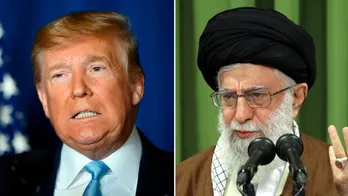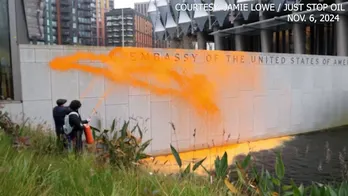1 year after Hezbollah strikes, Israel reinforces troops and questions mount over ‘limited’ operation
One week after Israel launched a ground incursion into Lebanon and one year after Hezbollah fired rockets into northern Israel on Oct. 7, 2023, in support of Hamas, Jerusalem reinforced its troops fighting inside Lebanon with a third division, prompting immediate questions over the extent of its "limited" operations in Lebanon.
The Israel Defense Forces (IDF) on Sunday sent troops from its 91st Division, also known as the Galilee Formation, to join forces already in Lebanon hunting down Hezbollah strongholds.
The 91st Division, traditionally responsible for overseeing security for the entirety of the border with Lebanon, will reinforce efforts already being carried out by two other divisions.
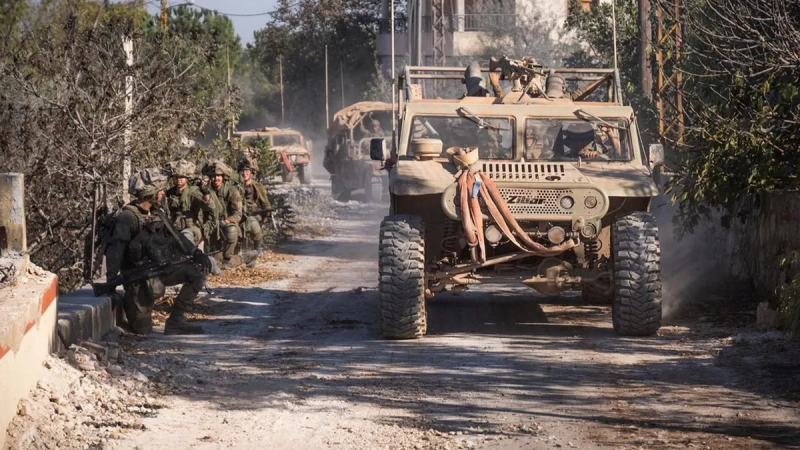
Israeli soldiers operate at a location given as Southern Lebanon in this image released on Oct. 6, 2024. (Israel Defense Forces/Handout via REUTERS)
AMERICAN FATHER OF HAMAS HOSTAGE ITAY CHEN PUSHES US, ISRAEL ON ‘PLAN B’ AS NEGOTIATIONS FALTER
Israel’s initial advance into Lebanon was led by soldiers from the 98th Division on Oct. 1, which encompassed paratroopers, elite commandos and the 7th Armored Brigade, who were transferred to northern Israel from the border with Gaza in early September for training, reported the Foundation for Defense of Democracies (FDD) Long War Journal on Sunday ahead of the IDF announcement.
"Forces from the Commando Brigade, including soldiers from the Egoz Unit, located and destroyed a Hezbollah attack infrastructure, which included a rocket launcher, explosive stockpiles, and additional military equipment," the IDF said of the initial operation.
Though Hezbollah’s response was fairly muted as many were believed to have retreated ahead of the incursion, at least nine IDF soldiers were killed between Oct. 1-2 during one of the opening battles in Lebanon, confirmed the Long War Journal.
Reinforcements from the IDF’s 36th Division, including the Golani infantry, 188th Armored Brigade and the 6th Reserve Infantry Brigade were then sent in, according to reports last week.
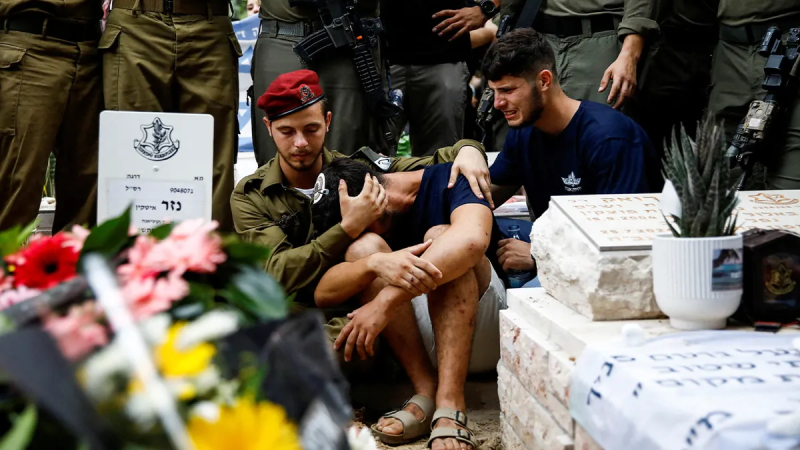
People mourn Israeli soldier Nazar Itkin, who was killed fighting in southern Lebanon amid ongoing hostilities between Hezbollah and Israel, during his funeral in Kiryat Ata, Israel, October 6, 2024. (REUTERS/Shir Torem/TPX IMAGES OF THE DAY)
Following the Israeli incursion – a security measure that the U.S. and other international allies warned Jerusalem against – IDF spokesperson Rear. Adm. Daniel Hagari said Israel would not push its ground forces north toward Beirut and would instead focus on securing the villages near the border.
Jerusalem has said the operation in Lebanon is necessary to secure the area so some 60,000 Israelis from northern Israel could return home, though data collected by the FDD shows that some 150,000 Israelis have evacuated from the northern border areas.
IDF MEETS LITTLE RESISTANCE FROM HEZBOLLAH AFTER WEEKS OF HITTING TERROR TARGETS, OFFICIALS SAY
Hagari said the incursion would be "limited" and take "days" to "weeks" to complete.
But the renewed support of additional troops on Monday prompted questions over the scope of Israel’s plans in southern Lebanon, including from the U.S. State Department on Monday.
In response to questions from reporters regarding Israel’s operations in Lebanon, State Department spokesperson Matthew Miller said, "We're watching this very closely."
"We support their ability to target militants, to degrade Hezbollah's infrastructure, to degrade Hezbollah's capability. But we are very cognizant of the many times in the past where Israel has gone in on what looked like limited operations and has stayed for months or for years," he added. "And ultimately, that's not the outcome that we want to see."
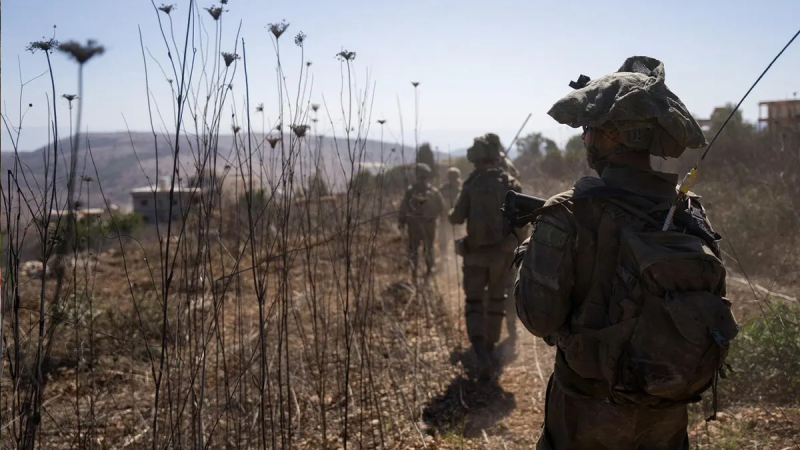
Israeli soldiers operate at a location given as Southern Lebanon in this image released on October 6, 2024. (Israel Defense Forces/Handout via REUTERS)
Israel has not announced any additional plans for its ground forces and said the IDF Divisions have engaged in "targeted, limited, and localized operations" in southern Lebanon to destroy Hezbollah’s infrastructure.
But one security expert with the FDD pointed out that Israel could be taking precautionary steps to build up its force in the region should Israel decide it needs to bolster its ability to go after Hezbollah even further.
"What the Israelis have been doing is gradually ratcheting up pressure on Hezbollah to make the price of continuing to attack in support of Gaza too costly for the organization," David Daoud, senior fellow at FDD specializing in Hezbollah and Lebanon, told Fox News Digital.
Daoud explained that in the wake of the Oct. 8 attacks, Israel and Hezbollah engaged in "mutual attrition," continuing to strike one another but rarely taking the level of attack beyond aerial bombardments, unlike the attacks carried out by Hamas on Oct. 7, 2023.

This chart depicts the number of Hezbollah attacks launched at Israel since Oct. 8, 2023, as compiled in a report by the FDD titled "Road to the Third Lebanon War: Mapping the War of Attrition Since October 8, 2023. (Image by Foundation for Defense of Democracies (FDD))
ISRAEL'S GROUND INVASION INTO LEBANON IMMINENT AS CABINET APPROVES NEXT PHASE OF THE WAR
This level of engagement shifted after Israel’s telecommunication device operation in which it allegedly detonated some 5,000 pagers previously distributed to Hezbollah operatives, killing more than three dozen and wounding nearly 3,000 others in a coordinated attack in late September.
Israel has not taken credit for the attacks, but according to open-source data compiled by the FDD in its latest interactive report dubbed "Road to the Third Lebanon War, Mapping the War of Attrition," the event was a clear launching point in which Jerusalem drastically changed its modus operandi when it came to countering Hezbollah.
On Sept. 22, Israel carried out its most significant bombardment against the terrorist group than at any other point since the Oct. 8, 2023,attacks, firing some 1,182 strikes, nearly five times the number of attacks it fired during its second-heaviest strike campaign on Feb. 11, 2024, when 239 strikes were fired, the FDD found.
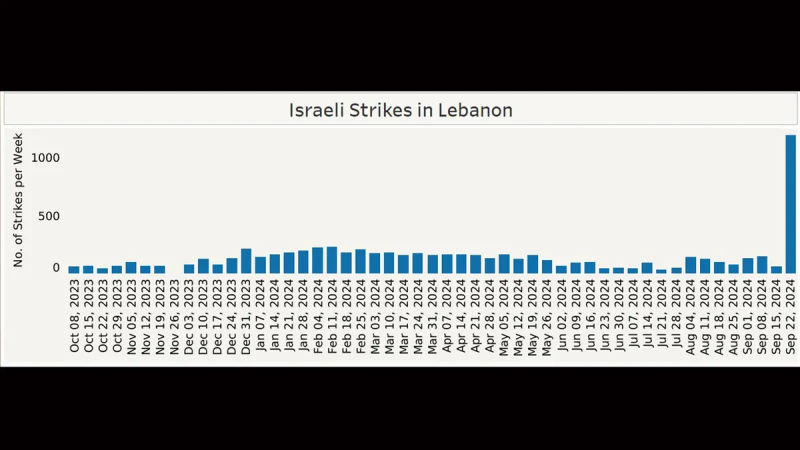
This chart depicts the number of Israeli strikes launched at Hezbollah since Oct. 8, 2023, as compiled in a report by the FDD titled "Road to the Third Lebanon War: Mapping the War of Attrition Since October 8, 2023." (Image by Foundation for Defense of Democracies’ (FDD))
"I would call it a kind of proactive attrition," said Daoud, who co-authored the FDD report. "The Israelis are no longer keeping a balance of attrition, they're really weighing heavily on Hezbollah without going to a full ground invasion."
The expert explained that the IDF is "ratcheting up pressure" on Hezbollah in an attempt to get it to back off its support for Hamas, a similar strategy it has taken in Gaza in an attempt to persuade Hamas leader Yahya Sinwar to hand over the hostages.
The merits of this approach are debatable as hostages remain in Hamas captivity despite the immense pains the IDF has caused in the Gaza Strip, and Daoud questioned whether this tactic would be effective against Hezbollah, an organization that is more sophisticated, better armed, better financed and more entwined in Lebanese society.
"I don't see Hezbollah backing down, even at this level of pain that the Israelis are inflicting upon them," Daoud said. "So a ground invasion may become necessary, and you want to make sure that your forces are in place for that to move into effect immediately, if that becomes the case."
The expert highlighted that Israel may once again be considering the establishment of a "security zone" in Lebanon in order to create a buffer between Hezbollah strongholds and the Israeli border, a move that would replicate steps Israel took between 1985 and 2000 and one that would require a prolonged IDF stay in Lebanon.
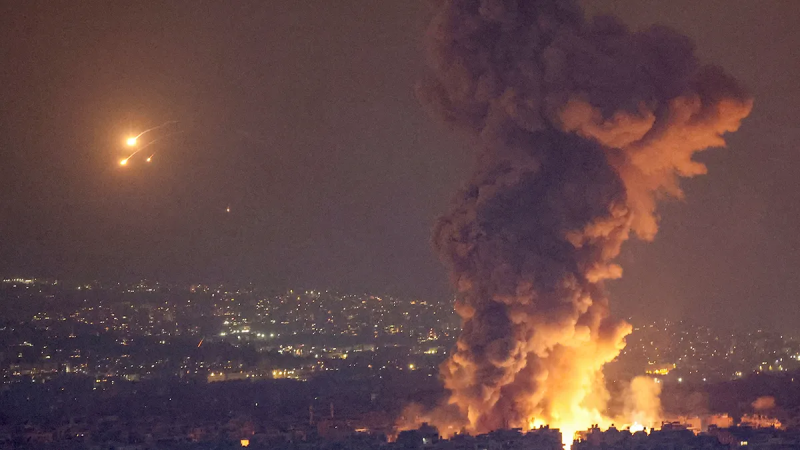
Smoke and flames rise in Beirut's southern suburbs after Israeli airstrikes as seen from Sin El Fil, Lebanon, October 6, 2024. (REUTERS/Amr Abdallah Dalsh)
CLICK HERE TO GET THE FOX NEWS APP
It is unclear if Israel could be considering another buffer-zone scenario, though it would likely prove unpopular not only with the Lebanese government but with the international community, which has increasingly urged Israel to reduce its footprint in the region by embracing a two-state solution with the Palestinians in the south and along Israel’s eastern border.
But Daoud argued that the threat Hezbollah poses isn’t going away and that creating a buffer zone combined with continued air strikes could be the solution that appeases the international community best by avoiding an all-out ground invasion across Lebanon.
"There are ways to avoid a ground invasion," Daoud argued. "It will take much longer, but given where international opinion is, this is probably a better option for Israel now than a full ground invasion up to Beirut."
Though Israel has not announced any plans to engage in a ground operation to oust Hezbollah forces from strongholds like Beirut, it has ramped up the number of strikes on suburban areas outside the capital city, and since late September the U.S. has organized the departure of some 700 Americans from Lebanon.
Disclaimer: The copyright of this article belongs to the original author. Reposting this article is solely for the purpose of information dissemination and does not constitute any investment advice. If there is any infringement, please contact us immediately. We will make corrections or deletions as necessary. Thank you.
